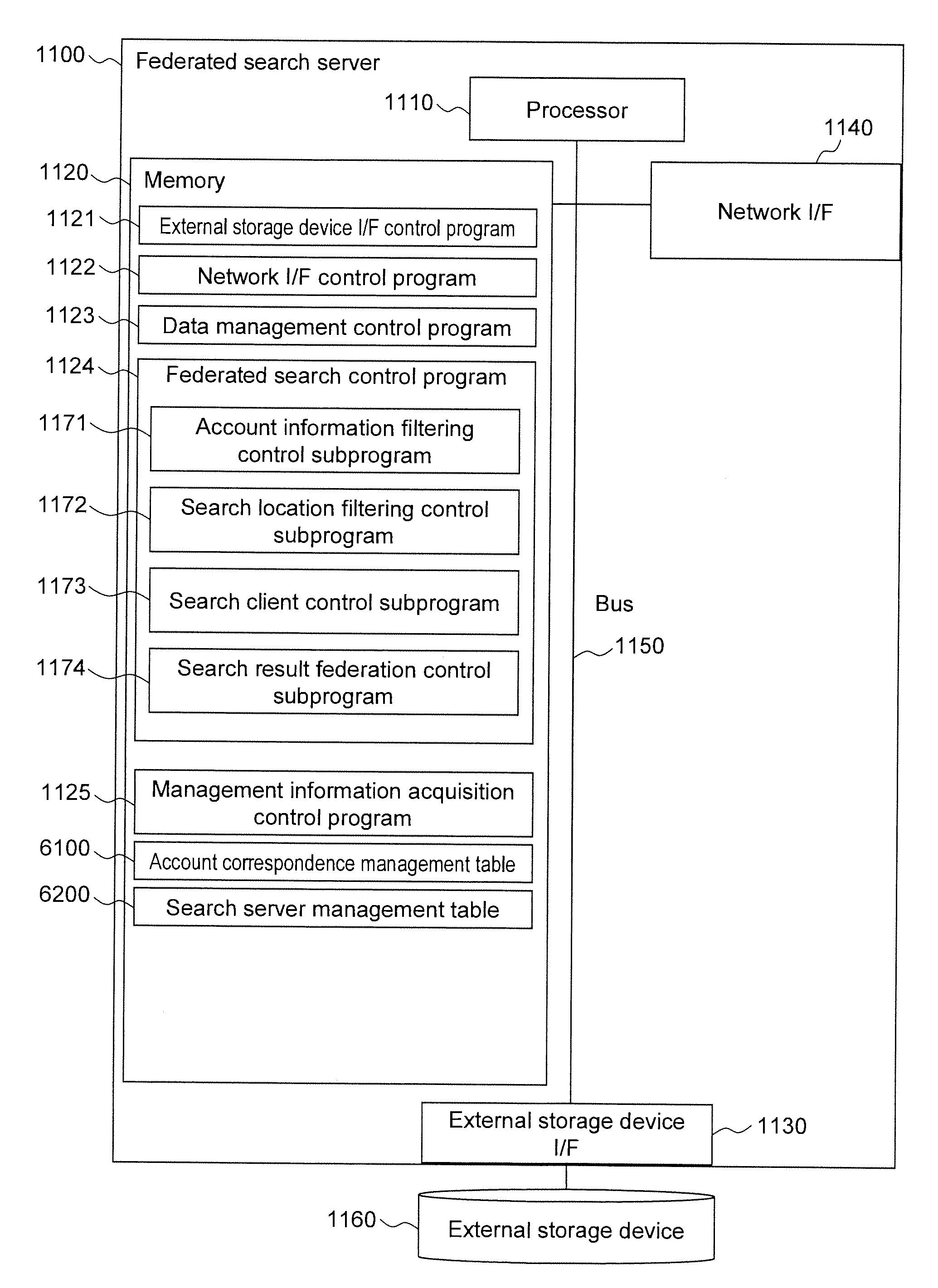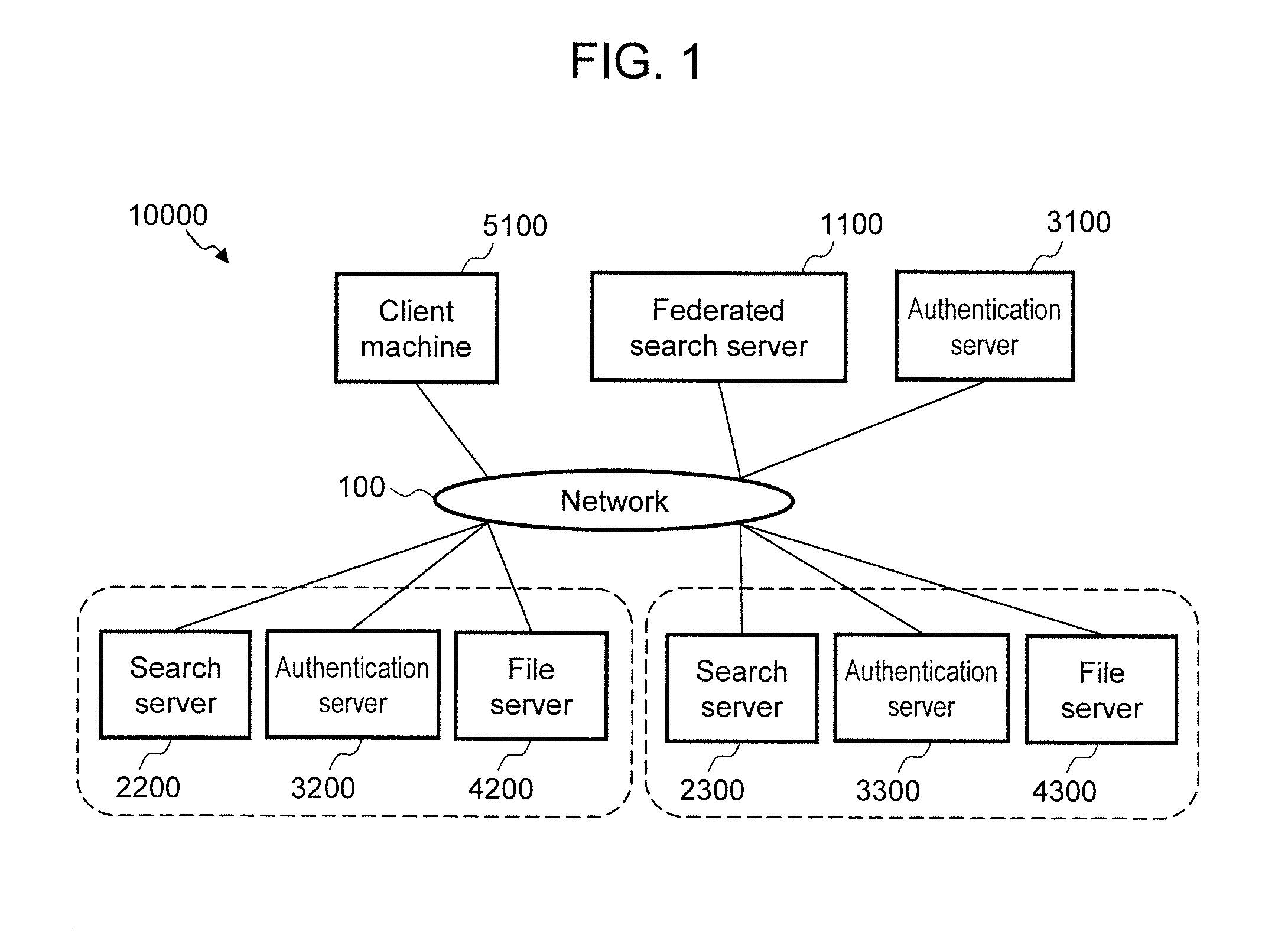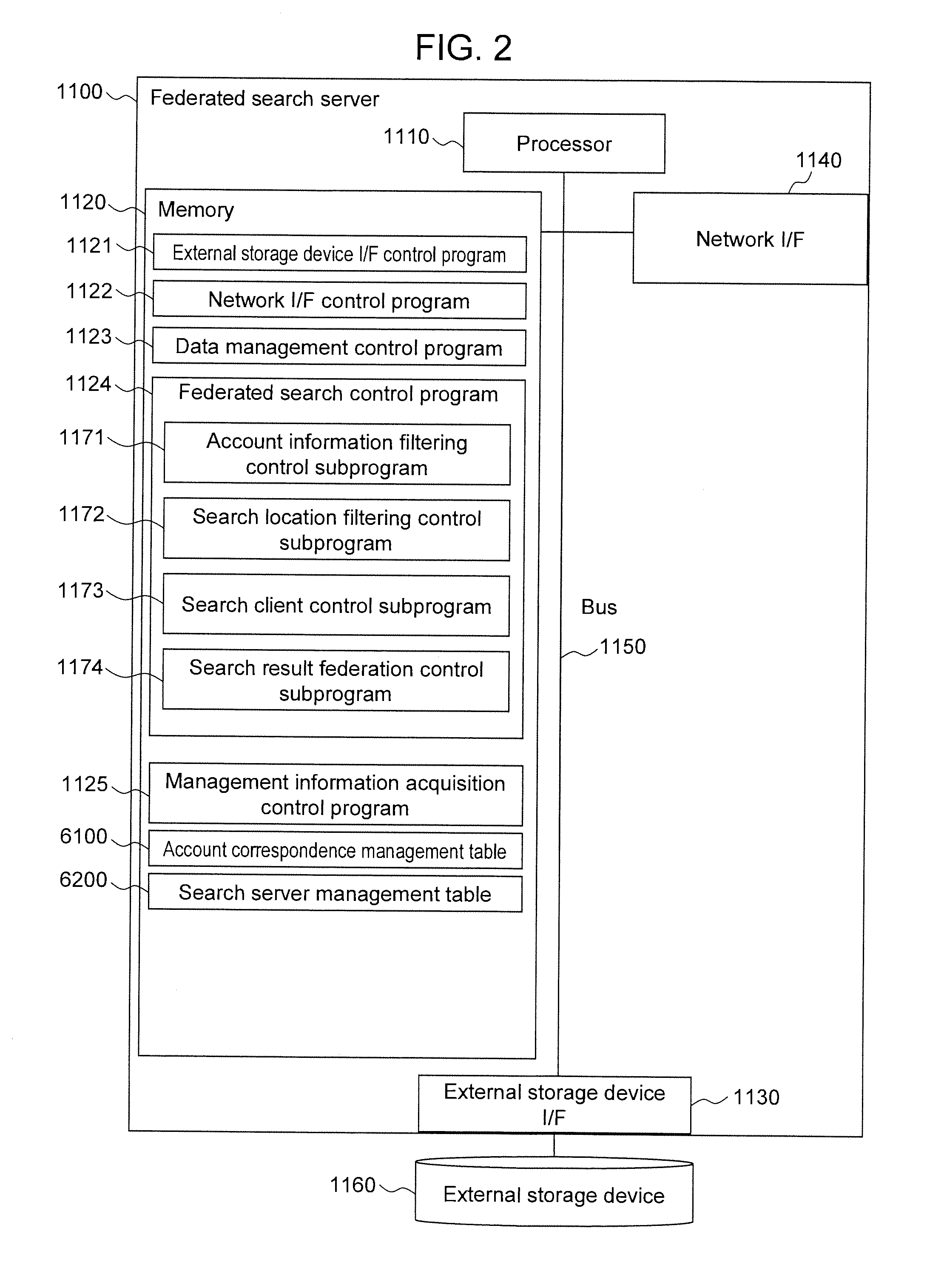Federated search apparatus, federated search system, and federated search method
- Summary
- Abstract
- Description
- Claims
- Application Information
AI Technical Summary
Benefits of technology
Problems solved by technology
Method used
Image
Examples
first embodiment
Summary
[0210]As described, the federated search server 1100 according to the first embodiment includes the account correspondence management table 6100 describing the correspondence between the access accounts that issue the federated search request and the access accounts that issue the search requests to the search servers. In accordance with the description of the account correspondence management table 6100, the federated search server 1100 specifies the access accounts on the search servers corresponding to the access accounts that issue the federated search request and sets the search conditions for returning, as a search result, only the range that can be accessed by the accounts to issue the search requests to the search servers. As a result, there is no need to transmit, to the search servers, the access account information unnecessary for the search servers to carry out the search, and the leak of the account information can be prevented to provide a secure federated searc...
second embodiment
Summary
[0222]As described, the federated search server 1100 according to the second embodiment transmits, as the user authentication information, the access accounts associated with the user who has requested the federated search when the search request is issued to the search server 2200. As a result, the access accounts that have issued the search requests are recorded in the access log of the search server 2200, and this is desirable in terms of security management.
Third Embodiment
[0223]In the first and second embodiments, the password 6130 of the access account is registered in the account correspondence management table 6100 in step S306 of FIG. 16. Meanwhile, the password information of the user may be periodically updated. If the password 6130 in the account correspondence management table 6100 is updated every time the password is updated, the management costs increase when the number of registered accounts is large.
[0224]A third embodiment of the present invention allows ca...
third embodiment
Summary
[0236]As described, when the search request is issued to the search server 2200, the federated search server 1100 according to the third embodiment transmits, as the user authentication information, the access accounts associated with the user who has requested the federated search if the password 6130 is registered in the account correspondence management table 6100. The federated search server 1100 uses the representative user account as the user authentication information if the password 6130 is not registered. As a result, even if the password 6130 is not registered or updated on the federated search server 1100, the representative user account can be used to log on to the search servers, and the security trimming process can be executed. If the password 6130 is registered, the same advantageous effect as in the second embodiment can be attained.
Fourth Embodiment
[0237]In the first to third embodiments, the representative user account 6230, the representative user account ...
PUM
 Login to View More
Login to View More Abstract
Description
Claims
Application Information
 Login to View More
Login to View More - R&D
- Intellectual Property
- Life Sciences
- Materials
- Tech Scout
- Unparalleled Data Quality
- Higher Quality Content
- 60% Fewer Hallucinations
Browse by: Latest US Patents, China's latest patents, Technical Efficacy Thesaurus, Application Domain, Technology Topic, Popular Technical Reports.
© 2025 PatSnap. All rights reserved.Legal|Privacy policy|Modern Slavery Act Transparency Statement|Sitemap|About US| Contact US: help@patsnap.com



